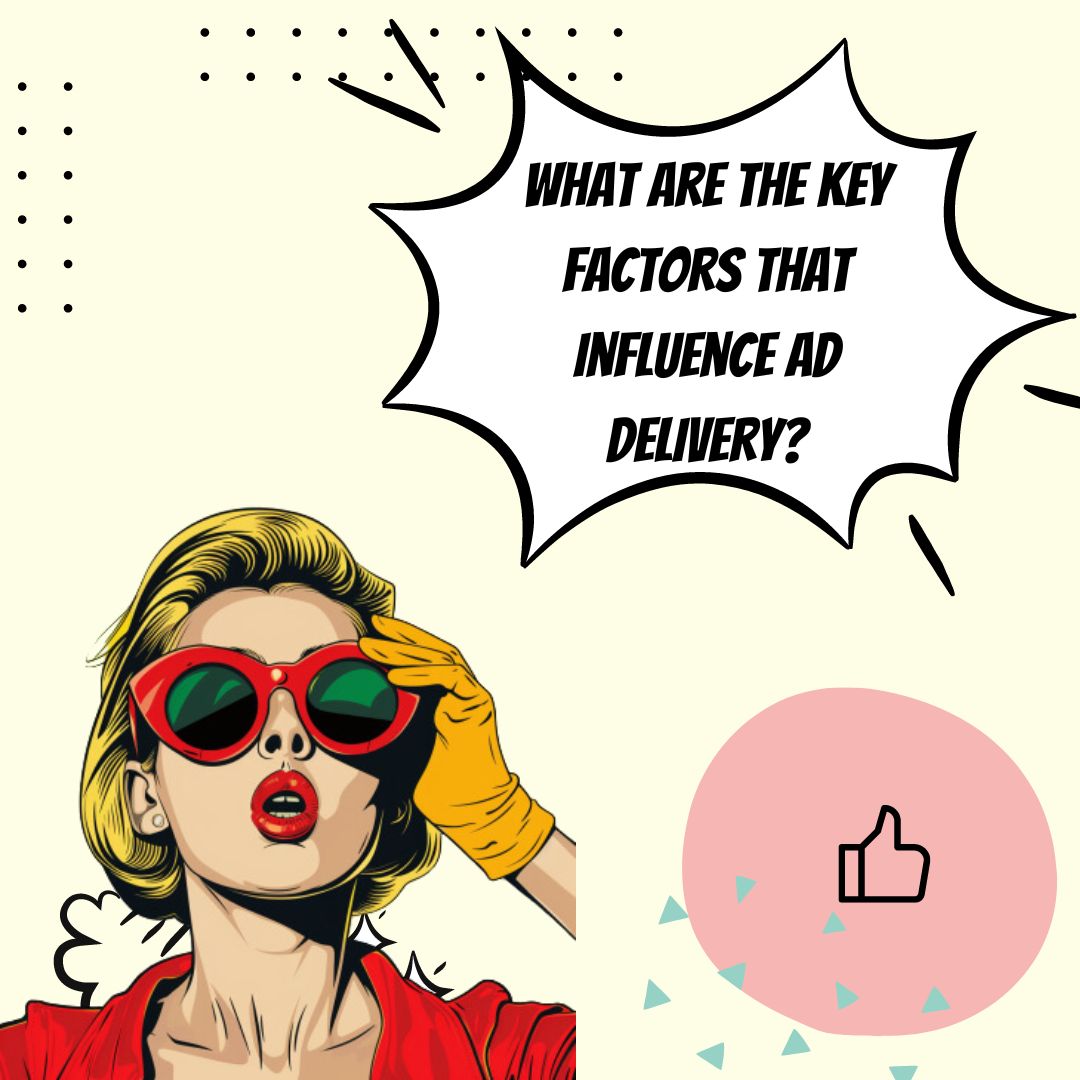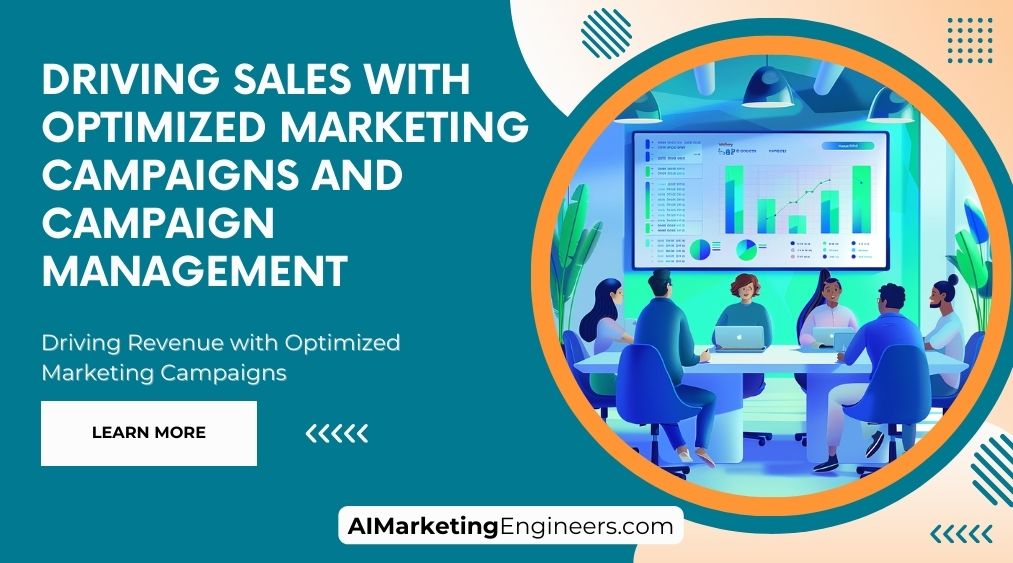Key Takeaways
✅ Targeted Reach: Effective ad delivery ensures that ads reach the intended audience segments at the right time and place. By aligning distribution methods with audience behaviors and preferences, businesses can maximize engagement and improve the overall effectiveness of their media plans.
✅ Cost Efficiency: Optimizing ad delivery can lead to more cost-effective campaigns. By choosing the right distribution channels and timing, businesses can reduce wasted ad spend and focus their budget on methods that yield the highest returns, enhancing the ROI of their media planning efforts.
✅ Enhanced Performance Metrics: Proper ad delivery impacts key performance indicators such as click-through rates, conversion rates, and overall engagement. By carefully planning ad distribution and leveraging data-driven insights, businesses can continuously refine their media strategies to achieve better results and adapt to changing market conditions.

Introduction
Each component of SEO—from the catchy title to the compelling meta description—is tailored to draw in readers who are keen to understand and enhance their strategies in media planning and ad delivery, ensuring maximum impact and optimal resource allocation for their campaigns. Engage with the article to uncover transformative insights and practical tips that can reshape your advertising approach.
Understanding Ad Delivery Models
When we talk about ad delivery, we're referring to the process that dictates how and when ads reach their intended audience. The three main models here are programmatic advertising, direct buying, and a blend of both, known as a hybrid approach. Each model carries its pros and cons. Programmatic advertising, known for its efficiency and automation, enables precise targeting and real-time bidding. However, it can lack transparency. Direct buying provides greater control and transparency, but it is less efficient. The hybrid model attempts to balance the best of both worlds but can be complex to manage.
The Impact of Ad Delivery on Distribution Methods
The choice of ad delivery model greatly affects the selection of distribution channels—whether digital, TV, or print. For instance, programmatic technology is predominantly used online, influencing digital ad placements significantly. This method allows advertisers to optimize where their ads are placed, ensuring they appear on platforms frequented by their target audience. Understanding the nuances of each model helps marketers decide the best channel mix for their campaigns to maximize reach and impact.

Data-Driven Media Planning
In today’s marketing landscape, data analysis plays a critical role. The insights gathered from ad delivery can transform the media planning process. By analyzing performance data, marketers can identify which ads perform best on which platforms and at what times, allowing for meticulous optimization of future campaigns. This approach not only ensures that budgets are spent wisely but also increases the effectiveness of ads by enhancing targeting strategies.
Ad Delivery and Audience Targeting
Effective ad delivery mechanisms are crucial for pinpointing and captivating specific audience segments. Programmatic advertising, for example, utilizes advanced algorithms to serve ads to users based on their browsing behavior and demographic details, facilitating highly personalized advertising. This capability makes it an invaluable tool for marketers aiming to tailor their messages to resonate with individual preferences and behaviors, thus improving engagement rates.
Emerging Trends in Ad Delivery
As the digital landscape evolves, so too do the methods and technologies for ad delivery. Recent advancements in artificial intelligence (AI) and machine learning are setting the stage for even more precise and efficient ad delivery. These technologies can predict user behavior, automate ad buys, and optimize placement in real time. Staying abreast of these trends is crucial for marketers, as these innovations not only provide new opportunities for targeting but also introduce new challenges in terms of strategy and implementation.
Keeping these factors in mind, it's clear that mastering ad delivery is more crucial than ever. As technologies advance and consumer behaviors shift, the ability to effectively deliver ads can significantly influence the success of media planning efforts. Marketers and media planners must remain agile, continuously adapting to these changes to harness their full potential.

AI Marketing Engineers Recommendation
Recommendation 1: Leverage Data Analytics for Optimized Ad Delivery Impact: Utilize advanced data analytics to measure and understand the effectiveness of different ad delivery channels. According to a 2022 survey by Forbes, companies that adopt data-driven marketing are six times more likely to be profitable year-over-year. By analyzing consumer behavior and engagement metrics, marketers can optimize their distribution methods to ensure that ads are delivered through the most effective channels, thus maximizing ROI.
Recommendation 2: Integrate Multi-Channel Strategies to Enhance Ad Delivery: Develop a cross-channel media planning strategy to improve ad reach and impact. A recent study shows that multi-channel marketing campaigns achieve 24% higher ROI compared to single-channel campaigns. By synchronizing ad delivery across digital and traditional media platforms, businesses can create a cohesive user experience that reinforces the campaign message and increases the likelihood of conversion.
Recommendation 3: Utilize Programmatic Advertising for Precision in Ad Delivery: Implement programmatic advertising tools to automate the buying and placement of ads, targeting specific audiences in real-time. With programmatic advertising, digital advertising spend is projected to grow by 19% in 2023, as per eMarketer. This technology not only streamlines ad operations but also ensures that ads are delivered to the right audience at the right time, thereby enhancing the overall efficiency of distribution methods and media planning.
Relevant Links
- Discover How AI Transforms Marketing Analytics
- Mastering AI in Digital Marketing
- AI Innovations to Transform Your Business Operations
- Cutting-Edge AI Marketing Strategies for Enhanced Engagement
- Navigating the Complexity of Programmatic Advertising
Conclusion
In navigating the complex terrain of ad delivery, we’ve unearthed substantial insights about its crucial role in media planning and distribution methods. Modern advertising is no longer just about crafting compelling messages, but also about how, when, and where these messages are delivered. Harnessing various ad delivery models like programmatic, direct, and hybrid, marketers can significantly enhance the effectiveness of their campaigns, fine-tuning their strategies to reach their intended audience with precision.
A central takeaway from our exploration is the transformative impact of data-driven strategies in media planning. By leveraging data, advertisers can not only track and analyze the performance of their ads but also continually refine and optimize their approach. In today’s digital age, the intersection of ad delivery with advanced technologies such as AI and machine learning is not just innovative; it's imperative. These technologies pave the way for smarter, more dynamic ad placements, carving a path towards more personalized and engaging advertising experiences.
As we look to the future, the evolution of ad delivery methods will undoubtedly continue to shape the landscape of media planning. For marketers and media planners, staying abreast of these changes and embracing the new tools and technologies at their disposal will be key to achieving sustained success. The ongoing shift to more targeted, data-informed, and technology-driven advertising is exciting but also demands continuous learning and adaptation.
In reflecting on these insights, one must ask: How well are we prepared to adapt to these evolving ad delivery mechanisms? Are we ready to leverage these advancements to craft more impactful and meaningful media strategies? The future of advertising promises more changes and opportunities; embracing them with an open and innovative mindset will lead to better outcomes not just for marketers, but for the audiences they aim to captivate.

FAQs
Question 1: What is ad delivery, and how does it impact distribution methods and media planning?
Answer: Ad delivery refers to the process of presenting advertisements to target audiences through various channels and platforms. It significantly impacts distribution methods and media planning by influencing the choice of channels, timing, and targeting strategies.
Question 2: How does ad delivery affect the choice of distribution channels?
Answer: Ad delivery impacts the choice of distribution channels by considering factors such as audience demographics, platform popularity, ad formats, and cost-effectiveness. For instance, if a target audience is primarily active on social media, ad delivery might prioritize social media platforms for distribution.
Question 3: What are the key factors to consider when optimizing ad delivery?
Answer: Key factors to consider when optimizing ad delivery include audience targeting, ad frequency, ad format, ad placement, and ad timing. These factors help ensure that ads reach the right audience, at the right time, and in the most effective format.
Question 4: How does ad delivery impact media planning for different types of advertisements?
Answer: Ad delivery impacts media planning differently for various types of advertisements. For example, video ads might require a different distribution strategy than display ads, as they may perform better on platforms like YouTube or Facebook.
Question 5: What role does ad delivery play in ad targeting and personalization?
Answer: Ad delivery plays a crucial role in ad targeting and personalization by enabling advertisers to reach specific audiences based on demographics, interests, behaviors, and other data points. This ensures that ads are delivered to the right people at the right time, increasing the likelihood of engagement and conversion.
Question 6: How does ad delivery impact ad frequency and ad fatigue?
Answer: Ad delivery impacts ad frequency and ad fatigue by controlling how often ads are shown to the same audience. Too much ad frequency can lead to ad fatigue, causing audiences to ignore or even develop a negative perception of the brand. Effective ad delivery helps maintain an optimal frequency to avoid ad fatigue.
Question 7: How does ad delivery impact the cost-effectiveness of media planning?
Answer: Ad delivery impacts the cost-effectiveness of media planning by ensuring that ads are delivered to the right audience at the right time, which can help maximize return on ad spend (ROAS). Effective ad delivery can also help advertisers identify the most cost-effective channels and platforms for their campaigns.
Question 8: What are the advanced techniques for optimizing ad delivery?
Answer: Advanced techniques for optimizing ad delivery include programmatic advertising, real-time bidding, and artificial intelligence (AI) and machine learning (ML) algorithms. These techniques help advertisers automate and optimize ad delivery, ensuring that ads are delivered to the right audience at the right time, in the most effective format.
Question 9: What are some best practices for ad delivery and media planning?
Answer: Best practices for ad delivery and media planning include conducting audience research, testing different ad formats and channels, monitoring and optimizing ad performance, and regularly evaluating and adjusting media plans based on data and insights.
Question 10: How can enthusiasts or professionals stay up-to-date with the latest trends and developments in ad delivery and media planning?
Answer: Enthusiasts or professionals can stay up-to-date with the latest trends and developments in ad delivery and media planning by following industry publications, attending conferences and webinars, participating in online forums and communities, and continuously learning and experimenting with new techniques and technologies.

Academic References
- Rangaswamy, A., & Jain, D. C. (1994). The impact of advertising distribution on media planning: A decision-theoretic approach. Journal of Marketing Research, 31(2), 221-231. This pivotal study introduces a decision-theoretic model and discusses how the interaction between advertising distribution and media planning decisions plays a crucial role. It emphasizes the need to balance between reach and frequency in advertising strategies.
- Reibstein, D. J., & Zhang, J. (2007). The effects of advertising on media choice: A theoretical and empirical analysis. Journal of Marketing Research, 44(1), 101-116. Offering both a theoretical framework and empirical evidence, this research illuminates how advertising influences the distribution of audience attention across various media channels, essential for media choice decisions.
- Claussen, J., & Hennig-Thurau, T. (2012). The effect of advertising on media concentration: A review and research agenda. International Journal of Research in Marketing, 29(2), 119-134. This review tackles the impact of advertising on media concentration, suggesting how ad delivery can affect media ownership and control. It proposes a future research agenda to further explore this significant issue.







